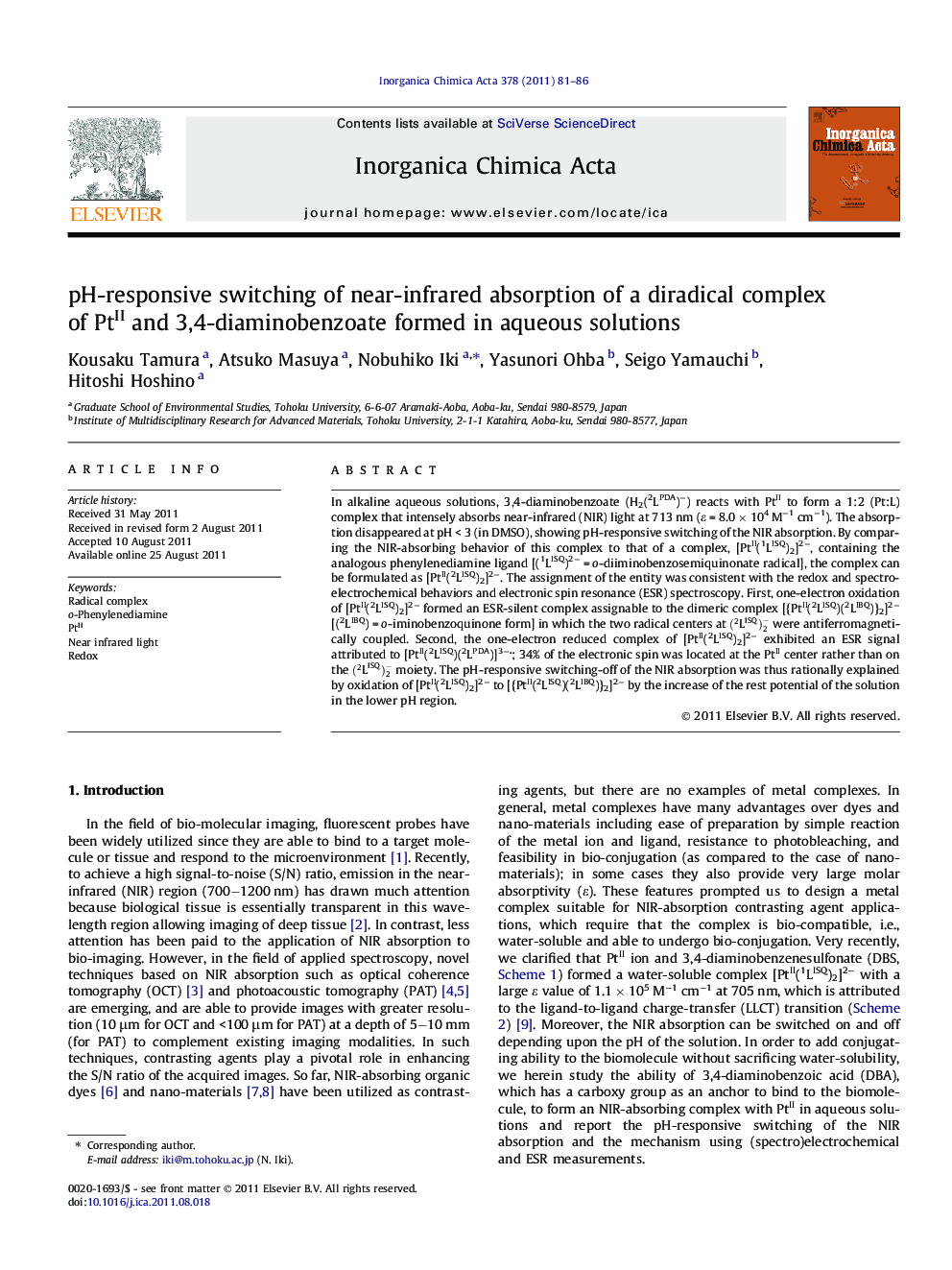| Article ID | Journal | Published Year | Pages | File Type |
|---|---|---|---|---|
| 1307512 | Inorganica Chimica Acta | 2011 | 6 Pages |
In alkaline aqueous solutions, 3,4-diaminobenzoate (H2(2LPDA)−) reacts with PtII to form a 1:2 (Pt:L) complex that intensely absorbs near-infrared (NIR) light at 713 nm (ε = 8.0 × 104 M−1 cm−1). The absorption disappeared at pH < 3 (in DMSO), showing pH-responsive switching of the NIR absorption. By comparing the NIR-absorbing behavior of this complex to that of a complex, [PtII(1LISQ)2]2−, containing the analogous phenylenediamine ligand [(1LISQ)2− = o-diiminobenzosemiquinonate radical], the complex can be formulated as [PtII(2LISQ)2]2−. The assignment of the entity was consistent with the redox and spectroelectrochemical behaviors and electronic spin resonance (ESR) spectroscopy. First, one-electron oxidation of [PtII(2LISQ)2]2− formed an ESR-silent complex assignable to the dimeric complex [{PtII(2LISQ)(2LIBQ)}2]2− [(2LIBQ) = o -iminobenzoquinone form] in which the two radical centers at (2LISQ)2- were antiferromagnetically coupled. Second, the one-electron reduced complex of [PtII(2LISQ)2]2− exhibited an ESR signal attributed to [PtII(2LISQ)(2LPDA)]3−; 34% of the electronic spin was located at the PtII center rather than on the (2LISQ)2- moiety. The pH-responsive switching-off of the NIR absorption was thus rationally explained by oxidation of [PtII(2LISQ)2]2− to [{PtII(2LISQ)(2LIBQ)}2]2− by the increase of the rest potential of the solution in the lower pH region.
Graphical abstract3,4-Diaminobenzoate (1) reacts with PtII to form a diradical complex (2) absorbing near-infrared (NIR) light at 713 nm. The absorption disappeared at pH < 3 to show the pH-responsive switching, caused by the formation of the dimer (3) via oxidation with high rest potential of the solution at low pH.Figure optionsDownload full-size imageDownload as PowerPoint slideHighlights► 3,4-Diaminobenzoate formed a 1:2 diradical complex with PtII in aqueous solutions. ► The complex strongly absorbs near-infrared (NIR) light in alkaline solutions. ► The NIR absorption disappears at low pH owing to the oxidation and dimerization. ► The dimer is kinetically stable to give two-step reduction signals. ► Characterization with spectroscopic and electrochemical methods.
